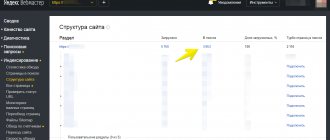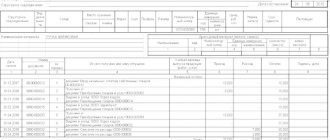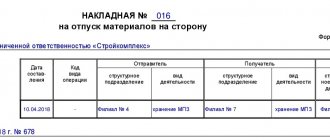Contextual advertising – what is it?
KR is an advertisement for the sale of a product or the provision of a service, which a user can find on a website or in a search engine. Such an ad always has a direct thematic link either to the site on which it is posted, or to the query that the user entered or previously entered into the search engine.
What are the goals of contextual advertising on the Internet?
- increase traffic and sales;
- demonstrate and bring to market a new product or service;
- conduct advertising campaigns and promote the brand;
- promote a new resource;
- improve the company's image.
The promising future of contextual advertising in search engines
According to Yandex, contextual online advertising in 2020 occupied about 80% of the entire market with a volume of 74-74.7 billion rubles. (excluding VAT), and the turnover of offline segments (television, radio, print and outdoor advertising) was declining.
In 2020, the volume of “context” amounted to 115.0-116.0 billion rubles. And year after year there is growth. In 2020, income from using the tool amounted to more than 158 billion rubles, surpassing even television.
The contextual Internet advertising market will continue to develop and grow in the future, outpacing the growth of the advertising market, that is, the share of the contextual advertising market in total advertising costs will increase. If we try to give a quantitative assessment, we think that in the next few years the Russian “context” market will grow by 15-25% in rubles annually.
What should the Kyrgyz Republic be like?
The mechanism of operation of the CD is quite simple: the ad responds to requests - the likelihood that the user will click increases. If the offer meets the capabilities and interests of the visitor, he may give preference to this particular company.
But for an ad to sell, it is not enough for it to be thematically related to the user’s requests.
- It must be appropriate. If a person visits a website with airline ticket prices, it is inappropriate to place advertisements for rail or road transport: if a person were interested in such types of transport, he would be looking for relevant resources. At best, the user will simply ignore the message, at worst, he will remember it as a company with intrusive advertising.
- The CD should be visually attractive: noticeable and catchy, but not intrusive and flashy with poisonous colors. Yes, the likelihood that the user (not particularly eagerly and joyfully, but still) will notice such an ad is quite high, but it is unlikely to cause a positive response and a desire to use the services of a particular company. Even if the user is really interested in the service.
- Another important condition is information content. It should be clear from the ad what exactly is being offered to the user; it should not contain dubious or misleading information - it should be very clear about what the company is offering, to whom and at what price.
- Ideally, the offer should be unique and precisely targeted, so reaching the target audience tends to be 100%.
What needs to be remembered is that the decision always remains with the user. Only he decides whether to pay attention to advertising or not, follow a link or not, use a service, buy a product or not.
KR remains useful to this day and brings new customers and new sales. This is explained by the operating principle of KR: unlike almost any other advertising, contextual advertising does not seek to convince an uninterested person that he needs, for example, a motor cultivator - KR works with an already interested audience, with those who really need a motor cultivator.
Users themselves reveal their interests using search queries - the Kyrgyz Republic relies and focuses on them. Therefore, by sending a request to Google or Yandex, the user triggers the internal mechanism of contextual advertising, thereby essentially helping advertisers display ads.
Free courses
- “How to place an advertisement in Direct” from Yandex.
- “Yandex.Direct Specialist” from PPC.World.
- Google Ads Basics from Google.
- "Yandex.Direct: preparation for certification" from Netology.
- “Google Adwords: preparing for the exam” from Netology.
- "Google Ads Specialist" from PPC.World.
- “How to set up advertising in Google search” from Netpeak.
- “Step-by-step launch of advertising in Goole Ads, YouTube and Instagram from 0 to the first requests” from Convert Monster.
- “Contextual advertising: from the basics to increasing efficiency” from eLama
Even more useful materials
You might be interested in checking out my other articles:
- A large selection of materials for studying web analytics.
- A selection of free courses on Internet marketing.
- A large selection of materials for learning Google Tag Manager.
- Table of useful resources for marketers.
You can read more similar articles on my Telegram channel “I am a Marketer”.
I write about digital marketing and web analytics. Or on the website proroas.ru Don’t forget to share with colleagues or simply with those who may be interested in the article.
Knowledge to everyone!
Contextual advertising: examples and types
Search contextual advertising – these ads occupy first places in search results. For example, we request “online store of mineral cosmetics”
These ads are always marked as advertisements in the search results and are fully consistent with the user's request.
For placing such advertising, companies pay directly to search engines (Yandex, Google).
Advertising on Internet sites (thematic) - ads not in search results, but on the pages of different sites:
What we see: a site about the weather, the Kyrgyz Republic - about apartments, shoes, cars. If a search advertising ad is strictly tied to one request, then it uses the baggage of all previous requests stored in the browser cookie. Therefore, you shouldn’t be surprised by such a selection of ads on a weather forecast site - and be prepared to see sudden ads on other sites that do not at all correspond to the topic of the ad.
This kind of CI works only if the user is within the same search engine: if the user was looking for something in Yandex, then went to Google, the latter will not learn anything from the first: in Google, contextual advertising ads for queries that the user entered in Yandex are not shown.
Money from clicks is transferred to two companies: the advertising network and the site owner.
Targeting in the Kyrgyz Republic (remarketing and retargeting) – advertisements on YAN platforms, including on social networks.
This CD works with users who have visited the site before, so its main informant is the visitor directly, because he himself leaves information about himself, which is what targeting on YAN sites is focused on. Hence the main advantage is millions of “live” users.
Remarketing and retargeting are essentially the same thing - it is a mechanism for reaching an audience that previously visited the resource. Only Google AdWords calls it remarketing, and Yandex.Direct calls it retargeting.
Dynamic ads (product ads) are ads for individual campaigns that are created automatically and placed in Yandex search and on YAN sites.
Such a CD is shown both in special placements and in guarantee advertisements, and information from the page or from the data feed (for product advertisements) is taken as a basis.
At the same time, the budget has virtually no effect on the effectiveness of such a campaign: even if there is little money and ads cannot be placed in special placements, dynamic ads show high conversion.
Image from yandex.ru
Why do you personally need contextual advertising?
Contextual advertising from the user’s perspective is a kind of one very large online store where everything is available. Moreover, there is no need to run around and look for where things are. Products and services are found for you based on your own requests. You enter a request and interesting offers are shown and found for you.
Contextual advertising from the advertiser’s perspective is a kind of queue of interested users. They look for you themselves in searches, on the sites they visit. And your ad is shown only to interested users. Your advertisement is the filter and entrance to your store, and the website is the counter, shelves and stands.
Basic contextual advertising systems (Google AdWords, Yandex.Direct, Begun)
The Runet, including its context, is ruled by two search engines: Yandex and Google. Google's CR system is Google AdWords, Yandex's is Yandex.Direct. Their competitor is Begun from Rambler. Let's consider the features of the mechanisms.
- Google AdWords is a world leader and trendsetter. The main thing in this system is a large number of settings. This is both a plus and a minus: it will be difficult for a beginner to understand, they need experience in management and configuration, but if you try and understand, advertising can be configured very accurately and subtly. It is recommended to focus on this system for large companies, including those working on the foreign market (Google is used more outside the Russian Federation), as well as for those targeting a mobile audience.
Other advantages include clear targeting, the ability to sort ads by groups and categories, calculation of the cost of one click and QS (a qualitative indicator with which you can change this cost)
- Yandex.Direct is the domestic leader (80% of contextual ads in our country come from it). Managing and setting up a campaign is much simpler here, the number of settings is minimal, although the developers are developing the mechanism and regularly updating the set of functions. Optimal for beginners who find it difficult to understand a large number of settings, as well as for companies aimed at the market of Russia and the post-Soviet space.
Another advantage is sorting by the same keywords, as well as very convenient filters: demographic (by age of users), language and by device type (PC or gadget - tablet or phone).
- Begun (Runner) is another Russian service owned by Rambler. Together with the placement of the advertisement on sites (including such large ones as, for example, Mail.ru), it allows you to broadcast advertisements in both Yandex.Direct and Google AdWords. The cost per click is quite low, and when choosing resources for placement, the age, gender and geographic location of visitors are taken into account. The system quite strictly determines the subject of requests, which is why in one advertising block you can see ads from competing companies.
Begun has its own features that fundamentally distinguish it from its competitors. Firstly, this is an auction payment system: the advertiser sets the price for a contact, click or impression, and then the system, using data received from users, determines the value of the ads and, accordingly, the winner who placed the best bid.
How to place it
The bulk of advertising is placed in Yandex and Google. The advantage of the first is the greatest popularity in the Russian-speaking segment, the second is the ability to attract an English-speaking audience. Each of them has its own system for this: respectively, Yandex Direct and Google AdWords. There is also Begun, which works both on Rambler and with the mentioned search engines.
The cost on each site varies and depends on the number of keywords and the average cost per click. You can calculate an approximate budget based on the following parameters:
- number of ad impressions;
- number of clicks on the link;
- CTR (the ratio of the second to the first, expressed as a percentage);
- cost per click.
Google AdWords has a “Traffic Estimator” tool to forecast approximate monthly expenses. But, of course, the calculation will not be accurate: you don’t know in advance how many visitors will end up on your site.
For people who are far from Internet technologies, it is better to turn to professionals for placement. I recommend certified specialist Vladislav Grishakov; his agency will set up high-quality advertising campaigns for you and offer their management to achieve maximum results. You will have to spend money, but you will be able to avoid many mistakes.
Freelancer services are cheaper. We have already discussed how and where to order contextual advertising in a separate article.
Features of setting up contextual advertising
Dividing campaigns into search and thematic ones
Search and thematic KR are configured differently, even the set of keywords will be different. Search is a momentary interest, the user needs information here and now, and the topic may appear a week after the request or visit to the site, when the user might have forgotten that he was there and when he was looking.
CR in search engines is about working with user demand, so the main guideline is the user request. And the user needs to know specifically how one company differs from another, what are the advantages and benefits of the offer. More specifics and an adequate call to action are the key to success.
Thematic ads (ads for YAN in Yandex.Direct and Display Network in Google AdWords) require something different - a creative approach, creative text design and catchy images. These ads operate on a request that could only be stored in a browser cookie, not in the user's memory. You need to understand the behavioral nature of such advertising and organize the ads so that the user becomes interested enough to go to the site.
Selection of keywords
The selection of keywords is the formation of a semantic core, a set of queries that users enter and for which the KR system will display ads. It is necessary to proceed not only from standard queries, but also from synonyms, spelling options in transliteration, slang and jargon.
Yandex.Wordstat is used to select tools:
Google AdWords also offers a tool for selecting keywords – Keywords Planner: you can look at low-frequency keywords and designate your targeting region.
In both KR settings systems - Yandex.Direct and Google AdWords - you can set the conditional type of match to the user request: broad, phrase and exact. Depending on this, the contextual system will perceive word forms in keywords differently.
Despite the automatic tools, some of the work will have to be done manually: analyze the data, remove unnecessary words and add missing ones when there is not enough specificity. For example, a company does floristry, but exclusively for luxury weddings, or repairs phones, but only on Android.
This is necessary so that ads do not appear where no one will click on them - among ads with similar, but not the same queries.
Relevance of ad texts
Its effectiveness depends on how relevant the text is and meets the requirements of the placement system. Relevance in this context is compliance with the current information on the site; ideally, there should be 1 ad per 1 keyword. Yandex.Direct even highlights the title in bold if the text contains words from user queries.
In general, Yandex.Direct and Google AdWords have their own requirements for ad texts, but the following are the most common and most important:
- There must be a link to the landing page.
- There should be no spelling, punctuation or grammatical errors.
- The ad text should not consist entirely of capital letters; they can only be used in abbreviations and at the beginning of sentences.
- As with any advertising, you cannot openly compare your products with the products of competitors - this is unfair advertising (Federal Law “On Advertising”, N 38-FZ, Article 5).
- You must not violate the requirements of copyright law and intellectual property rights (for example, use someone else's trademarks).
- There should be no pornography, extremist materials, insults or inappropriate content.
More information about the requirements of the mechanisms can be found on their own resources: Yandex Help and Google AdWords Help.
Landing pages
Following the link from the ad, the user is taken to the target (landing) page - on it the visitor is prompted to immediately take an action: buy, order, register, and so on. To a certain extent, clicking on an ad is almost a purchase, so the landing page should call for action and facilitate this action in every possible way. These pages stimulate and increase the conversion of the Kyrgyz Republic, but creating a landing page for each advertising campaign is unprofitable. Therefore, the landing page should be the most appropriate page: product catalog, promotions or registration page.
Irrelevant ones include:
- main pages are too abstract, the user is interested in something very specific;
- contact pages - why write to the administration of a resource or store if you just want to order or buy something;
- “top” pages of the catalog - for example, a company is selling iPhones at a special offer - which means you need to put a link to the page with these iPhones, and not to the entire range of smartphones.
Types of advertising
Contextual advertising occurs in the following types: search and thematic, statistical and dynamic, text and text-graphic.
Search and thematic
In the search engine, we see a complete match of the pop-up advertisement with the text of the request. This type of advertising is called search advertising . Often the visitor does not notice the special mark and enters the site.
But there is also a partial coincidence, an intersection of interests. Let's look at an example.
We go to one of the proposed sites - its snippet contains recommendations for selecting bouquets.
The site does not have a purely floristic theme, but a general women’s theme, as its description and sections at the top of the page tell us.
Looking through an article about bouquets, we see advertisements for jewelry, cosmetics and tours.
Most women are interested in this. This means that a certain percentage of page visitors will follow the link and, possibly, purchase the product.
The pictures and inscriptions on the side do not reflect the user’s exact request, but are within the scope of his potential interests. This type of contextual advertising is called thematic advertising .
Search advertising is placed directly in the search engine because it more accurately meets the interests of a potential client. For these reasons, its effectiveness is higher.
Thematic ones are already shown on websites: they are usually viewed for a longer time. It allows you to reach a larger audience because it appears in different contexts, but its immediate effect is less. But a long-term impact is possible: the girl found out about discounts on gold, remembered the information, waited for her salary or her loved one’s, and visited the store.
Statistical and dynamic
By the nature of display, advertising can be static - occupy the same places every time you visit a site or search engine - and dynamic , when some ads replace each other. In the first case, she has a guaranteed place, which is reflected in the price.
Text and text-graphic
Advertising is also divided into text and text-graphic , which contains illustrations and can also be designed as a banner.
A banner is a static or dynamic image that can be displayed both in a search engine and on a website.
The graphics look more attractive and are better remembered, and also allow you to place the company logo, which increases brand recognition. It costs more.
Graphic design does not stand still: more and more new types of banners are appearing. Responsive banners are available in Google AdWords - they change their size depending on the characteristics of the site containing them. And online stores will find it convenient to use a smart banner: it already contains a catalog of products generated on the basis of the source site.
Basic Concepts
- Advertisement is an advertising message that is placed in search results or on a web resource in order to attract buyers and contains a link to a page with detailed information.
- An advertising unit is a place in a search engine or website where an ad is displayed. May include multiple advertisements.
- Audience – the total number of users who are targeted by contextual advertising and who are potential buyers of the advertised product or service.
- Targeting is a campaign setting mechanism that allows you to find and select a target audience from the entire audience, that is, one that meets certain parameters (social-democratic, geographical, and so on).
- Traffic is the total activity on a web resource, its attendance and number of views, as well as the number of orders from the site.
- Moderation – checking the application for posting an advertisement in the Kyrgyz Republic system for compliance with the requirements.
- Display – demonstration of an advertising block or ad to a user on a web resource page.
- Click – the user follows the link specified in the ad.
- Fraud is an invalid click that occurred by mistake, unintentionally or in bad faith.
- RTB (real time bidding) is a mechanism for purchasing advertising using online auctions in real time.
- CTR (click-through rate) is an indicator of the effectiveness of contextual advertising, showing the ratio of the number of clicks to the number of impressions of a particular ad.
- CPC (cost per click) – cost of one click.
Contextual advertising is an interesting, useful tool that requires precise, competent configuration, so it is better to entrust this to experienced specialists. You can order Yandex.Direct contextual advertising (or Google AdWords) on our website.
Providing your own platform for placing contextual advertising
If you have your own website, blog, or online store, then you can provide it as a platform for placing blocks with advertisements. This is how website owners make money.
But in order to become a member of the advertising network, you need to complete a certain list of actions.
- Fill out the form and submit it to the YAN.
- Conclude an agreement or accept a public offer (not subject to printing and double-sided signature).
- Add a website and design a site.
- Wait for the decision of the Yandex Advertising Network regarding the addition of your project.
- Create RTB advertising units, connect video advertising and dynamic ads.
- Install the code on the site in a special widget or block (you can customize the field using plugins).
- Wait for the site to load and show the blocks. For them, all you have to do is receive rewards to your Yandex Money wallet or to any bank card.
In order to connect your blog to YAN (Yandex advertising network), you do not need to reach a certain traffic threshold. All sites, without exception, that have at least 1-30 materials published are accepted here.
Advantages and disadvantages of such PR
The advantages are already presented quite well, we will only add that payment is made only for clicks on ads, that is, for clicking on links in the ad to the site, and not for impressions. Possibility of fine-tuning for a narrow segment of the target audience.
Disadvantages: There are also some, contextual advertising on the Internet is one of the most complex promotion tools, its setup is very difficult, if it is not configured correctly, the advertising campaign budget will be spent and there will be no return. Since 2009, in some niches the cost of a click has increased to $20 or more per click.
Before launching yourself or hiring a third-party contractor, you need to understand the issue and understand what contextual advertising is. Study at least superficially the principle of setting up advertising campaigns in certain services where you are going to invest funds through specialists. This is necessary in order to competently draw up technical specifications for the implementation of these services for setting up advertising.










